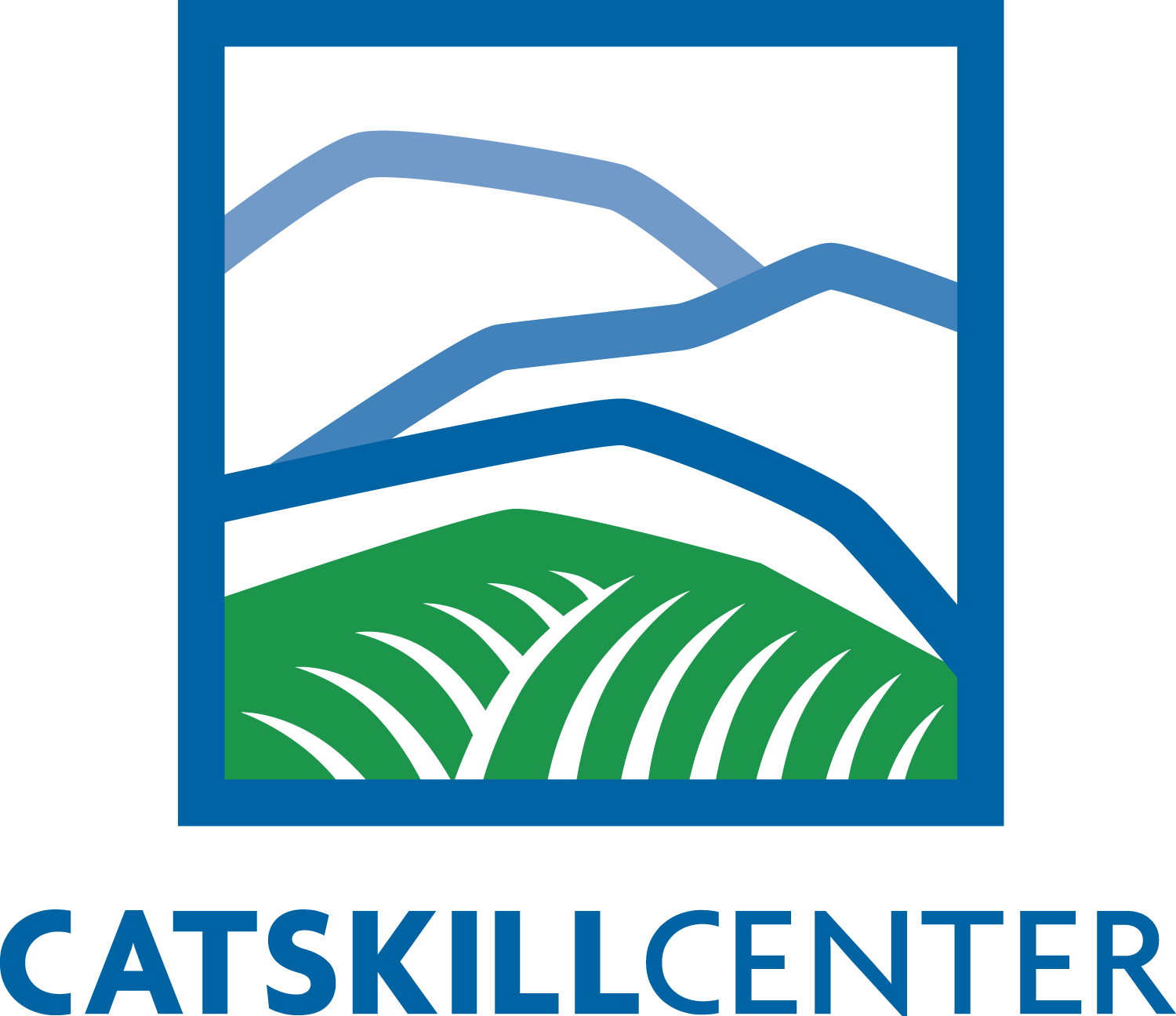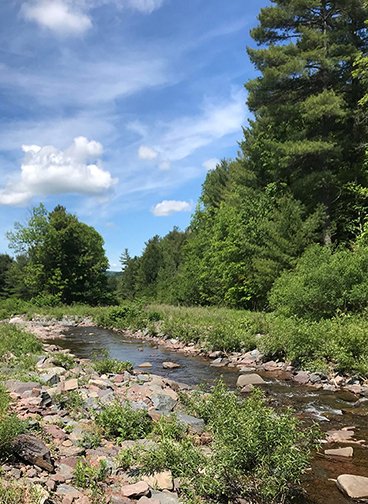Streamside Acquisition Program
What is the Streamside Acquisition Program (SAP)?
The Streamside Acquisition Program, or SAP, protects water quality in streams of the northeastern Catskills through the purchase of streamside lands. The Catskill Center runs this program in partnership with the New York City Department of Environmental Protection (NYC DEP), as one of many programs required by regulators to help protect the City’s drinking water at its source. Under this program, the Catskill Center purchases streamside ‘buffer’ lands and floodplains so they can be permanently preserved.
Preserving healthy, natural streams prevents streambank erosion, helps mitigate flood risk and climate change, protects wildlife, and preserves our region’s inherent natural beauty, which draws tourists from all over the world to visit our communities. For 53 years, the Catskill Center has been working to protect and foster the environmental, cultural, and economic well-being of the Catskill region. The Streamside Acquisition Program furthers that mission.
Where does the SAP focus?
To be eligible for purchase through the SAP, a property must:
● Be located within the drainage basin of the Schoharie Reservoir, which includes many of the mountaintop towns of Greene County, plus small portions of Delaware and Schoharie Counties;
● Include a stream, floodplain, wetland, or other lands within 300 feet of a stream or 1,000 feet of a NYC DEP reservoir*;
● Have no residential structures on the portion of the land to be purchased by the SAP (many people choose to sell only part of their land, along the stream, while retaining their home or land that could be suitable for a home in the future);
● Be located outside of areas identified by municipalities as ‘Designated Hamlet,’ which are areas intended for future growth. The SAP does not and will not reach out to landowners in these areas unless invited to do so by the municipality through a formal resolution. When people who own land in a designated hamlet call us, we encourage them to speak with their town or village board.
How does the SAP help communities?
● Sticking Close to Streams – The SAP tightly focuses on properties that make the biggest difference for protecting water quality. Most of the acreage the SAP acquires consists of streams, floodplains, wetlands, or other lands within 300 feet of streams. SAP staff encourage landowners to keep their more developable lands in private hands, selling the wetter areas to the SAP. Because of this tight focus, the SAP doesn’t need to buy large swaths of land. The SAP’s largest single purchase was 24 acres, and the smallest was 0.4 acres. On average, the SAP has acquired 14 acres per municipality since 2015. The most land acquired in any one town was 63 acres in eight separate purchases. The SAP’s focused approach exemplifies the National Academy of Sciences’ recent recommendation to NYC DEP to “focus on acquisition of the most valuable lands for water quality protection.”
● Increasing Flood Resilience – Undeveloped floodplains and wetlands naturally absorb flood waters during heavy rains, storing excess water and releasing it slowly over time. Keeping development out of the floodplain helps ensure a community’s future flood resilience. The SAP helps by protecting undeveloped floodplain areas. This complements Local Flood Analyses (LFAs) and the FEMA and NYC Flood Buyout Programs, which focus on relocating existing development out of the floodplain.
● Preserving the Tax Base – Streamside lands purchased through the SAP are owned and managed by NYC DEP after purchase. In keeping with the 1997 Memorandum of Agreement between NYC DEP and Catskills municipalities, NYC DEP pays property taxes on lands acquired through the Streamside Acquisition Program.
● Expanding Flexibility – The Catskill Center, NYC DEP, state and federal regulators, and municipalities are engaged in discussions that may result in an expansion of options available under the SAP for the benefit of both landowners and communities. These include options for towns and land trusts to hold SAP-acquired land and conservation easements.
● Honoring Community Goals – We strive to implement the SAP in ways that complement community goals. Catskill Center SAP staff regularly reach out to all the municipalities within the Schoharie Reservoir drainage basin to ask how the SAP can help towns and villages to enhance their communities.
How does it work?
If you think you might be interested in selling some of your streamside land, email us at sap@catskillcenter.org. With your permission, we’ll take a walk with you on your land, and talk with you about which streamside lands you’d like to sell and which upland areas you’d like to keep for future development. If it feels like a good fit for everyone, we can arrange for a professional, independent appraisal of the land you’d like to sell, at no cost to you. The sale price would equal the appraised value, and some properties also qualify for additional incentive payments and reimbursement of landowners’ costs. All conversations remain confidential until and unless you enter into a contract to sell your property; at that point, your town board would be afforded an opportunity to comment on the pending sale, as is routine for all lands to be owned by NYC DEP. NYC DEP will provide input, review, and approval at various stages of the transaction. That collaborative process can take time, and most landowners find that the transaction can take anywhere from 18-24 months, start to finish.
* Eligibility for the Streamside Acquisition Program is detailed in Section 9 of the 2010 NYC Water Supply Permit; please contact us at sap@catskillcenter.org with any questions.
Want to learn more? Please reach out to us at sap@catskillcenter.org. You may access our fact sheet here.

